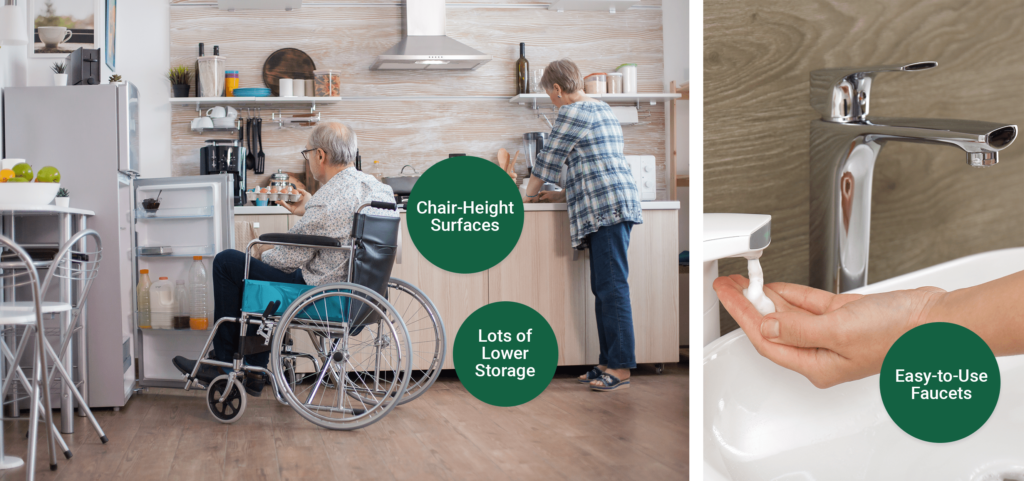
Aging in place design has come a long way from purely focusing on safety to incorporating style and aesthetic appeal. As the population of older adults continues to grow, so does the demand for living spaces that cater to their needs while allowing them to maintain their independence and sense of style. Let's explore how aging in place design has evolved over the years to strike a balance between safety and style.
The Importance of Aging in Place Design
As people age, their needs and capabilities change, making it essential to design living spaces that can accommodate these changes. Aging in place design focuses on creating homes that are safe, accessible, and comfortable for older adults to live in independently for as long as possible. This type of design not only benefits the elderly but also offers peace of mind to their families and caregivers.
Key Elements of Aging in Place Design
- Accessibility: Incorporating features such as ramps, wider doorways, and grab bars to make the home easy to navigate for individuals with mobility challenges.
- Safety: Installing non-slip flooring, proper lighting, and emergency response systems to prevent accidents and ensure quick assistance in case of emergencies.
- Comfort: Choosing furniture and fixtures that are comfortable and easy to use, as well as creating spaces that promote relaxation and well-being.
- Adaptability: Designing spaces that can easily be modified or customized to accommodate changing needs and abilities.
The Evolution of Aging in Place Design
Over the years, aging in place design has undergone a significant transformation, moving beyond purely functional solutions to incorporate elements of style and aesthetics. Designers and architects are now focusing on creating living spaces that not only meet the needs of older adults but also reflect their personal tastes and preferences.
Integration of Technology
One of the most notable advancements in aging in place design is the integration of technology to improve safety, comfort, and convenience for older adults. Smart home features, such as voice-activated assistants, automated lighting, and remote monitoring systems, have become increasingly popular in creating age-friendly environments.
Inclusive and Universal Design Principles
Another key trend in aging in place design is the adoption of inclusive and universal design principles. These principles focus on creating spaces that are accessible and usable by people of all ages and abilities, ensuring that older adults can age in place without feeling stigmatized or limited by their surroundings.
Eco-Friendly and Sustainable Practices
As sustainability becomes a top priority in the design industry, aging in place design has also embraced eco-friendly practices. From energy-efficient appliances to eco-conscious building materials, designers are incorporating sustainable elements into homes for older adults, promoting both environmental responsibility and long-term cost savings.
Benefits of Stylish Aging in Place Design
The shift towards stylish aging in place design offers numerous benefits for older adults looking to maintain their independence and quality of life while aging in their own homes. Some of the key benefits include:
- Enhanced well-being and mental health through aesthetically pleasing environments
- Improved sense of dignity and self-esteem with personalized and stylish living spaces
- Increased social connections and engagement with spaces that are inviting and comfortable
- Long-term value and marketability of homes with age-friendly and stylish design features
Conclusion
The evolution of aging in place design from safety-focused to stylish and aesthetically pleasing environments reflects a broader shift towards holistic and person-centered approaches to aging. By incorporating elements of style, technology, and sustainability, designers are creating living spaces that not only cater to the practical needs of older adults but also enhance their overall well-being and quality of life. As the demand for age-friendly housing continues to rise, embracing the principles of stylish aging in place design will be essential in creating homes that are not just safe and accessible but also beautiful and inviting for older adults to age gracefully in place.
